4 players remain from first Dodgers game in Vero Beach: What was Dodgertown like in 1948?
- Oops!Something went wrong.Please try again later.
- Oops!Something went wrong.Please try again later.
- Oops!Something went wrong.Please try again later.
With millions of dollars spent by Major League Baseball and Indian River County on field maintenance, artificial turf, an indoor training facility and more, the renovated Jackie Robinson Training Complex is beautiful.
It wasn’t that way 75 years ago when the Brooklyn Dodgers moved hundreds of minor leaguers into the abandoned naval air station for spring training.
I’d read some descriptions of old Dodgertown, like this in The Sporting News March 10, 1948: “a mass of famous Indian River orange trees, now loaded with ripe fruit and blossoms … Banners strung across downtown streets of this ‘Winter Home of the Brooklyn Dodgers’ proclaim the importance of their city to visitors … Wooden street markers at the camp were printed ‘Rickey Boulevard,’ ‘Durocher Trail.’ ‘Flatbush Avenue,’ ‘Bedford Avenue,’ ‘Ebbets Field.’ ”
Though I learned the team built suites amid old barracks for executives ― team manager Leo Durocher and his wife, actress Laraine Day, preferred the oceanfront Windswept Hotel ― I wanted to learn more.
After perusing the box score from the team’s first game in Vero Beach March 31, 1948, against the Montreal Royals (their top minor league team), I sought out the four living players among the 28 who saw action to tell me more, including what that game meant to them.
20-20 hindsight: How'd writer know March 31, 1948, would be 'biggest day' in Vero Beach history? Dodgers?
Biggest day in VB history? Jackie Robinson made unforgettable debut in first Dodgertown game
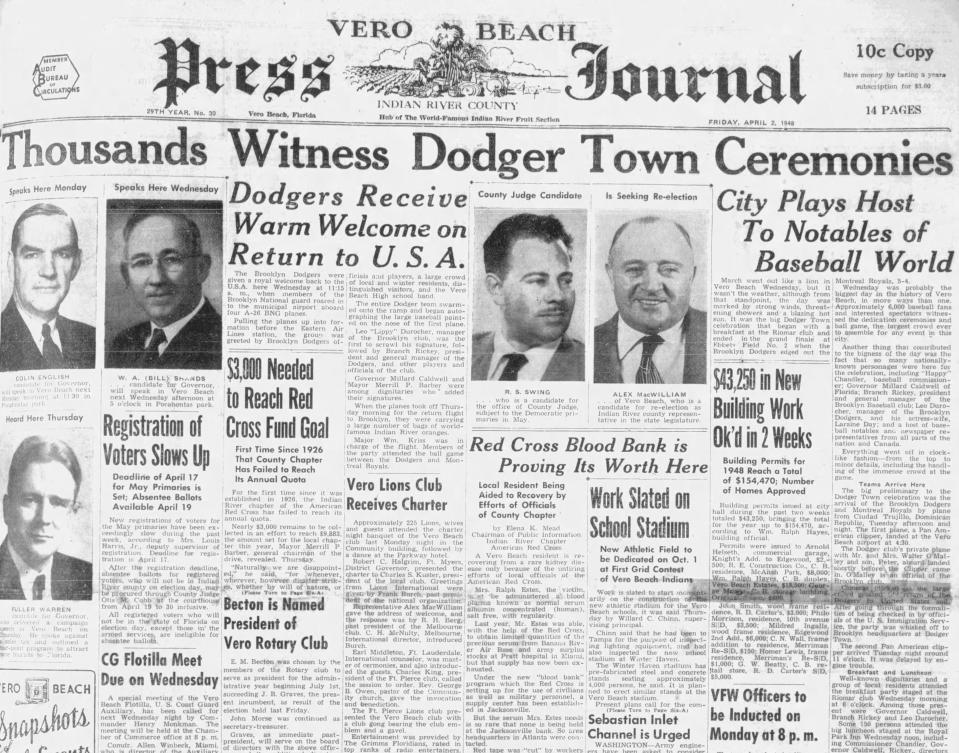
The search for Dodgers nonagerians
After all, the Vero Beach Press Journal called the event “probably the biggest day in the history of Vero Beach in more ways than one.” I wrote about that the other day.
My search for the four now-nonagenarians was intriguing.
The two I reached were the oldest living Major League Baseball player, who would turn 99 in April; and the most spry of the bunch, a career minor leaguer who just turned 96 and said he still dances at the Elks Lodge and routinely shoots his age in golf.
In memoriam: Community will miss humor, stories of ex-Vero Beach Dodgers announcer Joe Sanchez
In memoriam: Calm, cool, ex-Dodger Perranoski was amazing stopper, pitching coach, raconteur
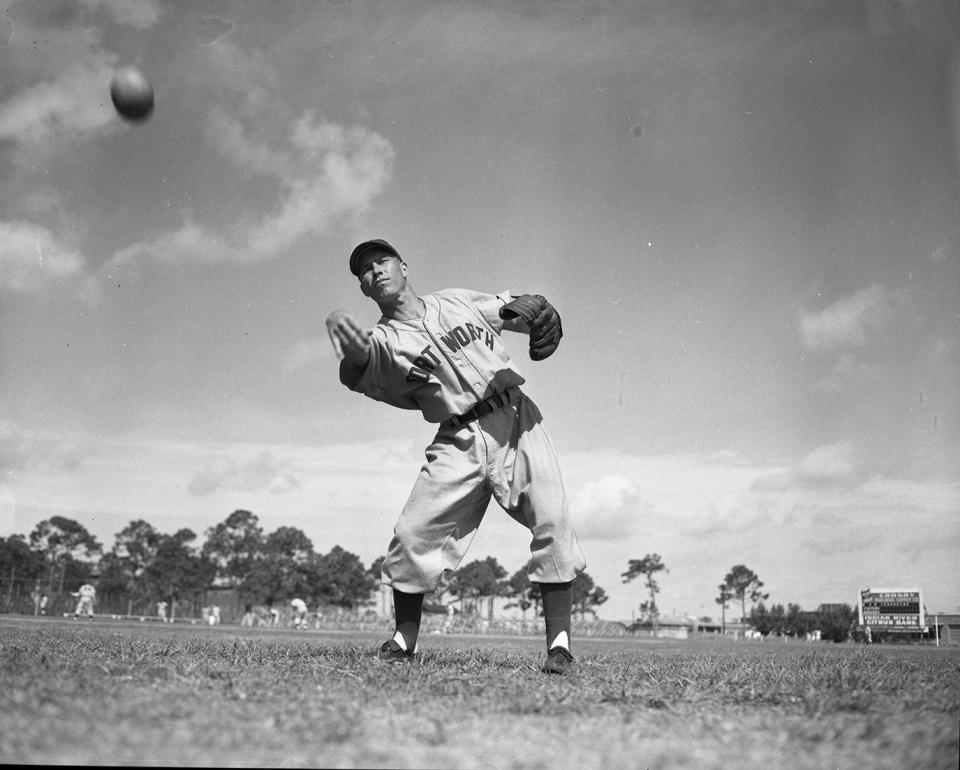
Jack Lindsey, pride of Fort Worth
Jack Lindsey, 96, hitless at shortstop in that first game for Montreal, was the first Texan invited to Esquire’s All-American Boys Baseball Game in New York’s Polo Grounds in 1944. After the train ride from Fort Worth, where he still lives, Lindsey went on Babe Ruth’s radio show and was on a team with Billy Pierce and Richie Ashburn. All-star team managers were Hall of Famers Mel Ott and Connie Mack.
Lindsey played a year at the University of Texas before signing with the Dodgers for a $5,000 bonus. Lindsey had been warned he’d have a tough time making the Dodgers, given they had 26 minor league teams. After a stint in the military, Lindsey spent his first year with the Dodgers organization in 1947, traveling to Havana at age 19 for spring training.
Lindsey played shortstop for the Royals that spring. His partner around second base? Jackie Robinson, who had played for Montreal the year before and would break the color barrier with the Dodgers when the season opened.
“I saw history being made,” Lindsey said, noting he never saw discrimination against his Black teammates, though he knew it occurred. “We were all just playing and hoping to do well.”
Robinson was a “nice guy and helluva ballplayer,” Lindsey said. “He could start and stop quicker than anyone I ever saw. … He had a unique talent.
“Jackie was a little more serious-minded,” Lindsey added, noting he doesn’t think Robinson set out to make a name for himself. He just wanted to play at a high level.
The Jackie Robinson connection: Vero Beach becomes destination for fans traveling the U.S. Civil Rights Trail
Look back: Memories of Dodgertown show historic connection to Jackie Robinson Training Complex moniker
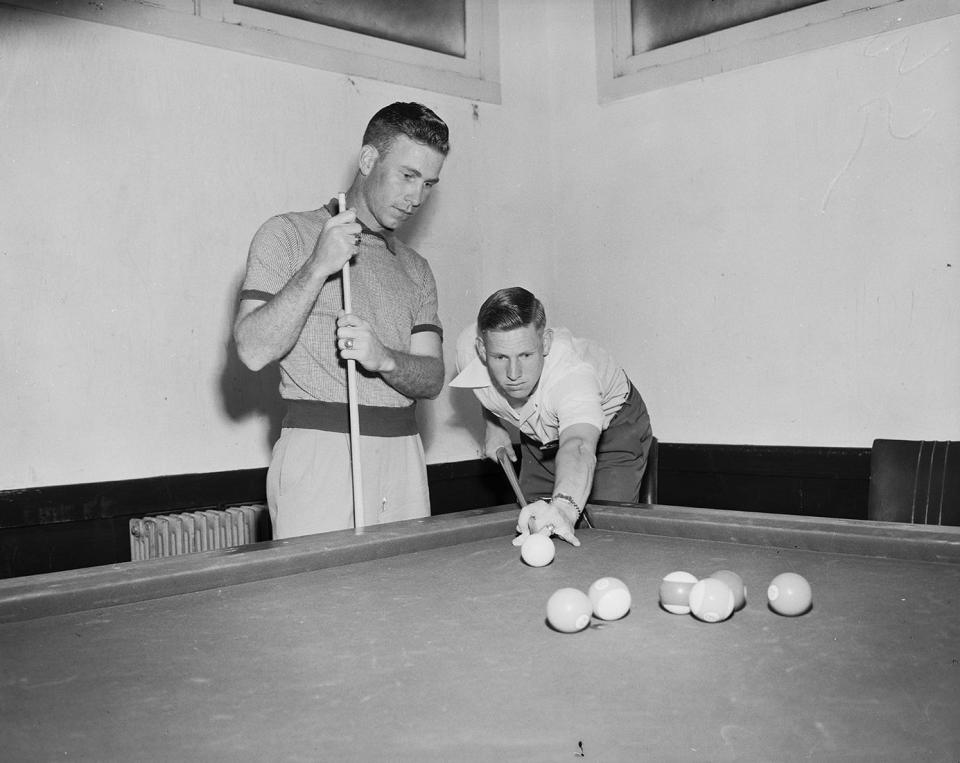
The Robinson-Rickey connection
Lindsey had one experience with Robinson he’ll never forget.
The second-baseman fielded a slow ground ball and tossed it to Lindsey, hoping for a double play. The runner at first was Eddie Stanky, the Dodgers' starting second-baseman. Stanky didn’t slide into second base. Had Lindsey thrown to first, it would have hit Stanky in the face, so the teenager held the ball.
Jogging off the field, Branch Rickey, Dodgers general manager, part owner and architect of Dodgertown, met him.
“ 'Son, if you ever hope to play for our ballclub, you had better throw that ball,' ” Lindsey said Rickey told him, adding runners should face consequences of their actions.
Lindsey spent 1947 at Class A Greenville, South Carolina, hitting a career-high .290. Most of his eight-year minor-league career was spent at AA Fort Worth, before going to work in the insurance business.
Lindsey’s recollection of Vero Beach revolves mostly around the Indian River Lagoon, where players took rowboats from a fishing camp to catch speckled trout and saltwater catfish. He also remembers the firmness of Dodgertown's ground. Lindsey said he broke his leg sliding.
He said he’ll never forget playing in the Polo Grounds and a game in Fort Worth when he hit four doubles. But he didn’t remember anything about that first game in Vero Beach.
Treasure Coast baseball history: New Treasure Coast links to Baseball Hall of Fame mean Ozark's list down to 3
Learn more: WalterOmalley.com's look at the first game at Dodgertown, 3-31-48
Art Schallock, baseball's oldest alumnus
Nor does Art Schallock, 98, a 5-foot-9 left-hand pitcher who finished the game for Montreal.
Shallock, who won six games in five years playing on two New York Yankees World Series-winning teams in the early 1950s, couldn't recall anything about the few days he spent in Vero Beach.
But, he told me, he and his wife, now married 76 years, did not want to trek back East from their home in California for a 1949 minor league season. He arranged to be sold to the Dodgers' minor league Hollywood Stars.
Schallock pitched in the Pacific Coast League until the Yankees traded for him July 12, 1951. The player the Yankees sent to the minor leagues to make room for Schallock: Mickey Mantle.
Schallock, a Sonoma resident who worked for title companies after playing, became baseball’s oldest alumnus when former St. Louis Brown George Elder died at 101 last year, according to the The Press Democrat.
Schallock’s one of the few surviving ballplayers who saw combat action during World War II. He was a radio operator on the USS Coral Sea, which received minor damage in a Japanese torpedo attack that claimed 644 men and sunk the USS Liscome Bay.
Tommy Brown, baseball's youngest home-run hitter
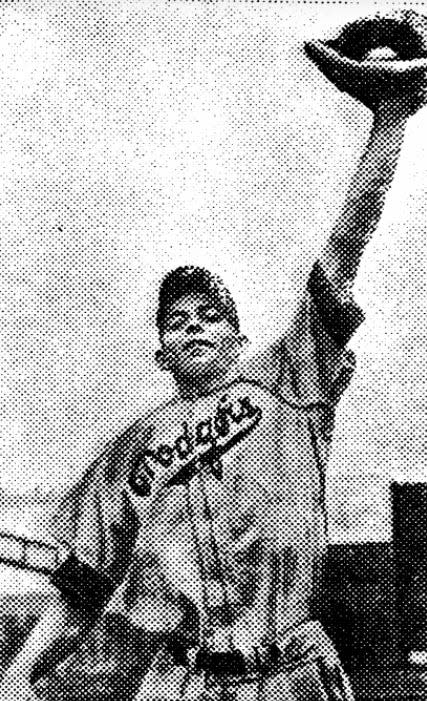
Postwar military veterans remaining from Dodgertown’s first game are Tommy Brown, 95, who played third base and had two hits for the Dodgers, and Bobby Morgan, 96, who played third for Montreal with a hit and a game-high 12 fielding chances. They could not be reached for comment.
Brown at 16 in 1944 became the youngest non-pitcher to play in a major league game when he filled in for shortstop Pee Wee Reese, who was in the military. Brown, at 17 the youngest man to homer in the big leagues, played seven seasons with the team in a nine-year career that saw him hit .241 with 31 home runs.
Brown, who lives in Florida, worked at the Ford Glass Plant near Nashville for 35 years, according to the Society for American Baseball Research.
In memoriam: Dodgertown 'heaven' to Vin Scully, like his calls were to sports fans' ears
In memoriam: Lasorda's passing sparks stories, memories from his 'favorite place on Earth'
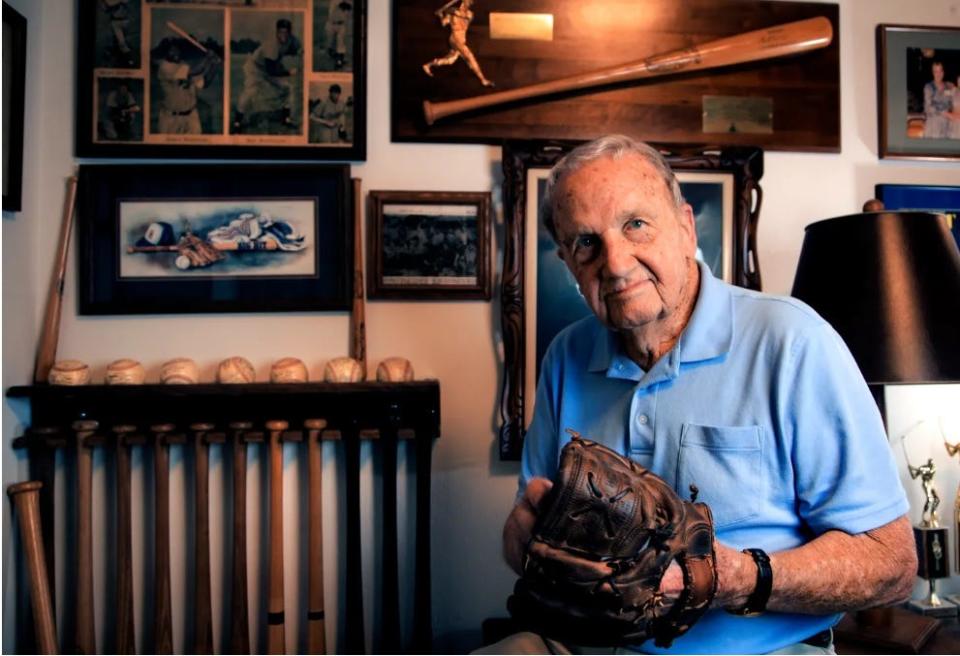
Bobby Morgan, pride of Oklahoma
Morgan retired in 2020 from Pancho’s Liquor Store in Oklahoma City, where he resides. He played with Schallock in Montreal in 1948, becoming the International League’s MVP the next year.
Morgan didn't meet a Black person until he got to Montreal, where he played with former Negro Leaguers Sam Jethroe and Dan Bankhead, according to The Oklahoman. Morgan played with Robinson on the Dodgers in 1950.
“It was awful (the racism Robinson endured),” Morgan told The Oklahoman. “I tell people about it and they think I am exaggerating. Nobody on the team could understand how he could take that kind of abuse. We took up for him all we could. … We wished we could go up in the stands and whip someone."
As part of an 18-year baseball career, Morgan played three years with the Dodgers, hitting .233 with 53 homers in eight major league campaigns.
He was on the Dodgers' 1952 and 1953 World Series teams and made two key plays to preserve Carl Erskine’s first no-hitter.
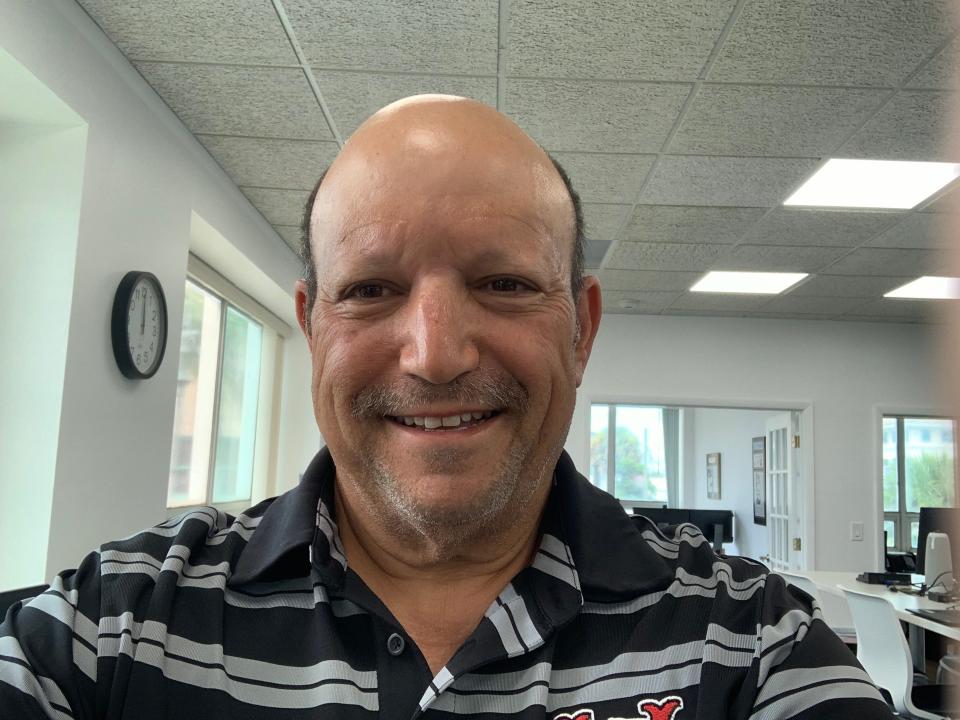
Erskine, 96, who pitched in five World Series for the Dodgers, also was in Vero Beach in 1948, but headed to Fort Worth before March 31.
“(Dodgertown) was very primitive,” Erskine told me, noting players carried fungo bats to ward off critters, including snakes and skunks. “You didn’t reach in a bush to get a ball out.
“Every kind of bug invented was in those (un-air-conditioned) barracks,” he said, noting they’d been vacant since the Navy left. “All kinds of creatures lived there before we did.”
This column reflects the opinion of Laurence Reisman. Contact him via email at larry.reisman@tcpalm.com, phone at 772-978-2223, Facebook.com/larryreisman or Twitter @LaurenceReisman.
If you are a subscriber, thank you. If not, become a subscriber to get the last local news on the Treasure Coast.
This article originally appeared on Treasure Coast Newspapers: 4 players left from 1948 Dodgers game in Vero Beach: What was it like?

